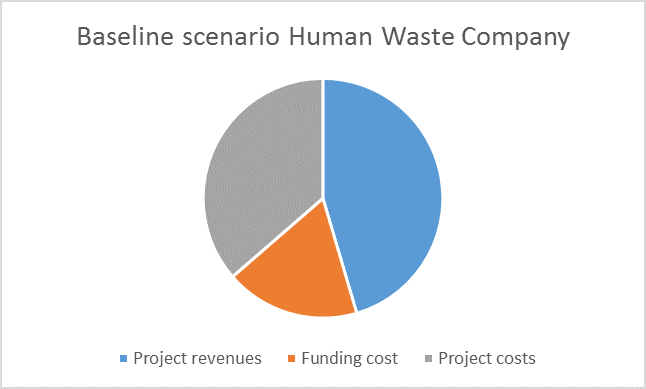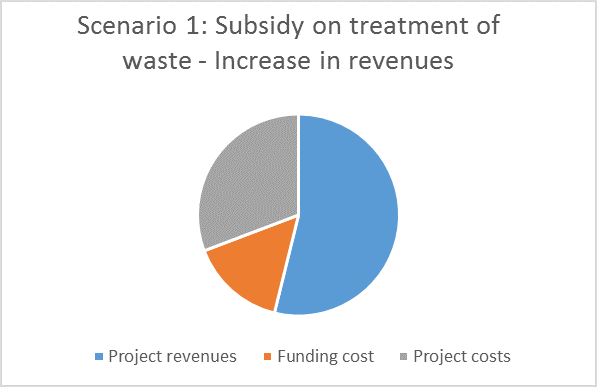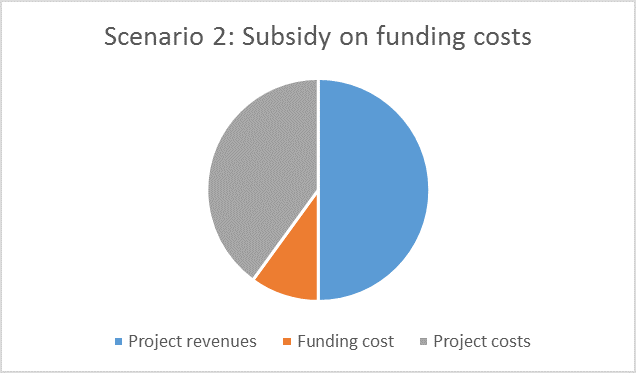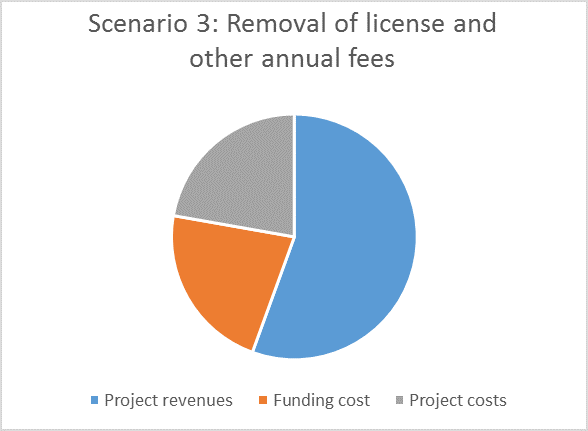Section outline
-
-
Financial analysis and its ensuing market prices do not really reflect the real value of goods, services and factors of production from the society’s point of view. There are many factors distorting markets and market prices ranging from rapid inflation, import tariffs, un- and underemployment, imperfect capital markets, small market size, literacy levels and environmental. In many developing countries, quite rarely the results of the financial analysis equal the cost of the economic analysis.
If the project income and expenditures do not reflect the costs and benefits to a society, then financial profits are an incomplete measure which the society will gain from a project. Also, the benefits to society of a project or business may be so great that despite a negative financial analysis, instruments can be used to change the outcome.
Proper faecal sludge management has positive external effects, as most environmental initiatives do, and clearly provides a benefit to the society. This implies that calculating profits as is done in the financial analysis needs to be augmented with a separate economic (social) analysis to establish the real gains to the society. Economic (social) cost-benefit analysis corrects the financial revenues and expenditures for differences in project effects and converting the resulting flows into benefits and costs on the basis of accounting prices.
The preparatory course does not look at the calculations and formulas of economic analysis in detail as it is more complex than financial analysis. Instead let us take at the basic underlying principles through an example.
The Human Waste Company (HWC) wants to run a business of collection and transporting human waste by truck. It also wants to treat the human waste and convert into an agricultural input which it wishes to market. It is a small town and there are no other interested buyers. The Government is interested in selling a license to start and operate this business to HWC.

Yet the financials of HWC do not look very promising. The Local Government realises that without the Human Waste Company human waste will only collected manually with serious health hazards and indiscriminately disposed and not treated. The project revenues are lower than the combined funding cost and project costs. Therefore, the Government is considering applying different instruments[1] that can change the company’s financial analysis. It uses socio-economic analysis to justify the usage of taxpayer’s money.
Scenario 1: Project revenues
The local government may decide to give a fee or subsidy for the amount of human waste collected and/or treated from the households. Though not easy to monitor, this will lead to increase in project revenues. The chart may now look as below:

Scenario 2: Funding costs
The Government or a donor may decide to provide project funding below market rates. For ease of explanation, say they decide to provide half the funding required for the business as a subsidy or a grant. HWC still needs to take a loan for the other half. In this case the business still does not look too promising:

Scenario 3: Project costs
The local Government looked at all the fees that HWC had to pay it annually, such as a license fee to operate its vehicles, run its business, and a separate one for the treatment site. In view of the positive environmental effects it has decided to waive all the fees.

All three scenarios show that based on the positive external effects – environmental – the Government can change the outcome of the financial analysis. The Government may apply one instrument, two or all three.
Yet from the point of HWC, there will still be a risk as the Government may change and whatever subsidy instruments were applied may be withdrawn.
There may be another reason for continued Government support in the case of HWC. The distribution of benefits amongst different social groups, different regions and different uses in terms of consumption and savings is important to governments. This is the area of social analysis. Social analysis is beyond the scope of the preparatory course.
[1] This is a simplification. Following this one link one may download 30 financial instruments used in the WASTE programmes, www.waste.nl An overview of the financial instruments for sanitation used in FINISH programmes in India and Kenya
-

